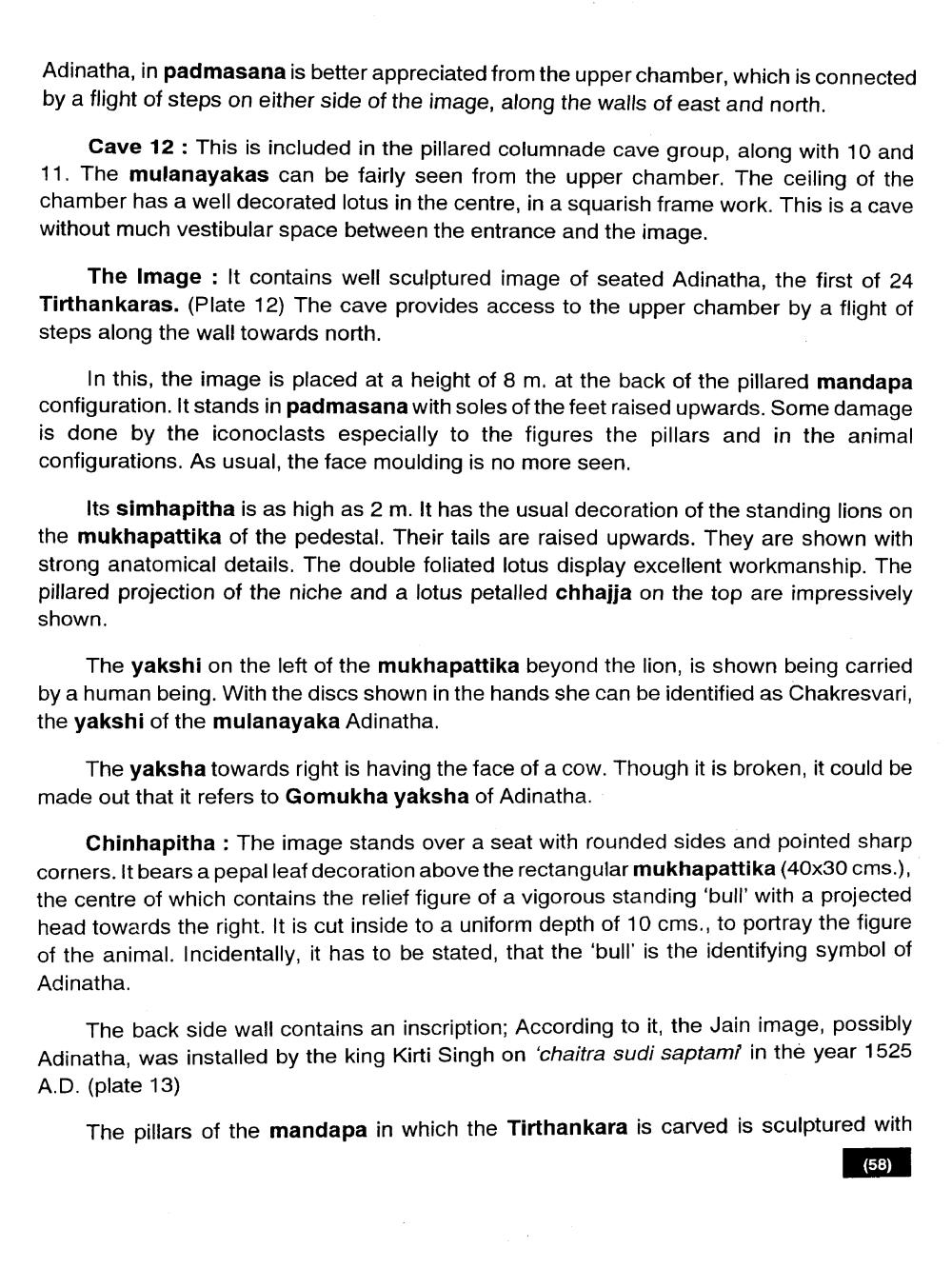________________
Adinatha, in padmasana is better appreciated from the upper chamber, which is connected by a flight of steps on either side of the image, along the walls of east and north.
Cave 12 This is included in the pillared columnade cave group, along with 10 and 11. The mulanayakas can be fairly seen from the upper chamber. The ceiling of the chamber has a well decorated lotus in the centre, in a squarish frame work. This is a cave without much vestibular space between the entrance and the image.
The Image: It contains well sculptured image of seated Adinatha, the first of 24 Tirthankaras. (Plate 12) The cave provides access to the upper chamber by a flight of steps along the wall towards north.
In this, the image is placed at a height of 8 m. at the back of the pillared mandapa configuration. It stands in padmasana with soles of the feet raised upwards. Some damage is done by the iconoclasts especially to the figures the pillars and in the animal configurations. As usual, the face moulding is no more seen.
Its simhapitha is as high as 2 m. It has the usual decoration of the standing lions on the mukhapattika of the pedestal. Their tails are raised upwards. They are shown with strong anatomical details. The double foliated lotus display excellent workmanship. The pillared projection of the niche and a lotus petalled chhajja on the top are impressively shown.
The yakshi on the left of the mukhapattika beyond the lion, is shown being carried by a human being. With the discs shown in the hands she can be identified as Chakresvari, the yakshi of the mulanayaka Adinatha.
The yaksha towards right is having the face of a cow. Though it is broken, it could be made out that it refers to Gomukha yaksha of Adinatha.
Chinhapitha: The image stands over a seat with rounded sides and pointed sharp corners. It bears a pepal leaf decoration above the rectangular mukhapattika (40x30 cms.), the centre of which contains the relief figure of a vigorous standing 'bull' with a projected head towards the right. It is cut inside to a uniform depth of 10 cms., to portray the figure of the animal. Incidentally, it has to be stated, that the 'bull' is the identifying symbol of Adinatha.
The back side wall contains an inscription; According to it, the Jain image, possibly Adinatha, was installed by the king Kirti Singh on 'chaitra sudi saptami in the year 1525 A.D. (plate 13)
The pillars of the mandapa in which the Tirthankara is carved is sculptured with (58)




